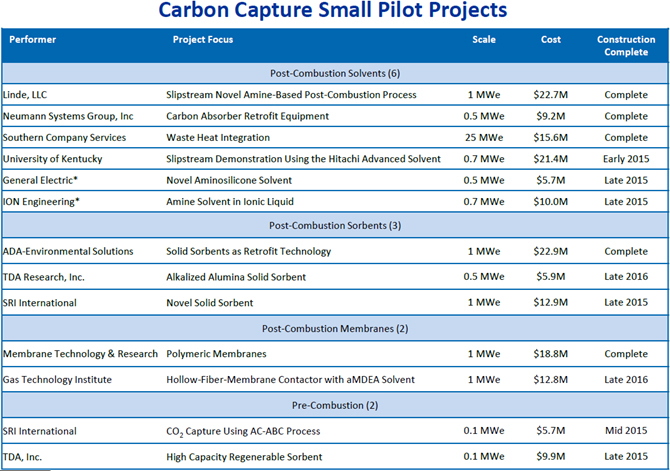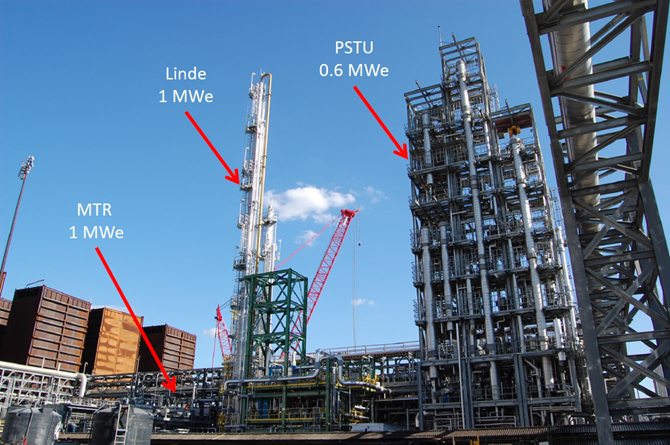Insights and Commentaries
Pilot scale testing critical to advance second generation capture technologies
15th June 2015
Topic(s): Carbon capture, Engineering and project delivery, use and storage (CCUS)
Advances in carbon capture technologies were a major topic of discussion at the Fourteenth Annual Carbon Capture, Utilisation and Storage (CCUS) Conference, held 28 April – 1 May in Pittsburgh, Pennsylvania. In this Insight, the Global CCS Institute's Principal Manager for Carbon Capture, Ron Munson, reports on the discussions.
The theme of the fourteenth Annual CCUS Conference, a gathering of key decision makers and technical experts from around the globe that shared their knowledge and experience to help accelerate the development and deployment of CCUS/CCS technologies, was “Is CCS ready for prime time?”. A common answer to that question for first generation capture technologies was "YES". However, it was acknowledged that lower costs and appropriate policy and regulatory support are essential to encourage widespread deployment of CCS.
A major element in driving down costs is the development and testing of second generation capture technologies. The US Department of Energy (DOE) has established a cost target for second generation capture technologies of US$40 per tonne captured. These technologies are expected to be ready for large-scale (over 50 megawatts of electricity (MWe)) demonstration testing in the 2020 – 2025 time frame, with deployment to follow depending on policy and regulatory requirements.
Pilot-scale testing is a critical component in preparing second generation technologies for demonstration and deployment. This involves operating the capture systems using actual flue gas slipstreams at a 0.5 to 25+ MWe scale for post-combustion systems (smaller for pre-combustion). José Figueroa, Carbon Capture research and development (R&D) Program Coordinator and Senior Project Manager at DOE’s National Energy Technology Laboratory (NETL), gave a presentation at the conference outlining DOE efforts to perform pilot-scale testing on second generation capture technologies. The Carbon Capture R&D program is currently supporting pilot-scale testing on 13 technologies for pre-combustion and post-combustion capture, as illustrated in the table below.

Source: U.S. Department of Energy
The National Carbon Capture Center (NCCC) provides key support for pilot-scale testing. This independent test facility, operated by Southern Company Services, offers the capability to test multiple carbon capture and gasification technologies at once. In addition, the NCCC provides experienced power plant personnel, scientists and engineers to technology developers, accelerating the development process by bridging the laboratory-to-field transition and supporting cost reduction goals. Post-combustion capture technologies can be tested using a 4.3 MWe slipstream from an operating coal-fired power plant. Facilities are available to support bench- through pilot-scale testing. To date, approximately 28,000 hours of testing have been completed on 15 different post-combustion capture technologies employing solvent, sorbent, and membrane-based systems. For pre-combustion systems, the TRIG™ gasifier can be operated in air- or oxygen-fired mode to produce syngas needed for CO2 capture technology testing. This part of the NCCC has been used for approximately 21,000 hours of testing using a variety of capture approaches and technologies. The photograph below shows the pilot-scale post-combustion testing area, including the membrane-based system being tested by Membrane Technology and Research (MTR) and the solvent-based system being tested by Linde. Also shown is the post-combustion solvent testing unit (PSTU), which allows multiple technology developers to leverage a permanent, yet flexible absorption pilot system at the NCCC to test the performance of their proprietary solvents, thereby saving time and money.

Source: U.S. Department of Energy
Looking toward the future, DOE has just closed a funding opportunity announcement (FOA) seeking applications for additional pilot-scale technology testing. The FOA was titled Small and Large Scale Pilots for Reducing the Cost of CO2 Capture and Compression. It included three areas of interest:
- Supersonic Compression Systems
- Small Pilot Scale (0.5 – 5 MW) CO2 Capture Development and Testing
- Large Pilot Scale (10 – +25 MW) CO2 Capture Development and Testing
It is anticipated that up to 15 projects will be awarded through this FOA with a total value of up to US$143.5 million.
The aim of these pilot-scale development efforts is to bridge the technology “valley of death” and facilitate the future large scale demonstrations needed to secure financing to support eventual wide-scale deployment. Efforts like this are also being pursued in Europe, Australia, and Asia. An important initiative of the Institute is to compile information regarding global pilot scale technology development efforts to inform members about cost reduction activities and to encourage cooperation and collaboration among developers seeking to offer the lowest-cost systems for CO2 capture.